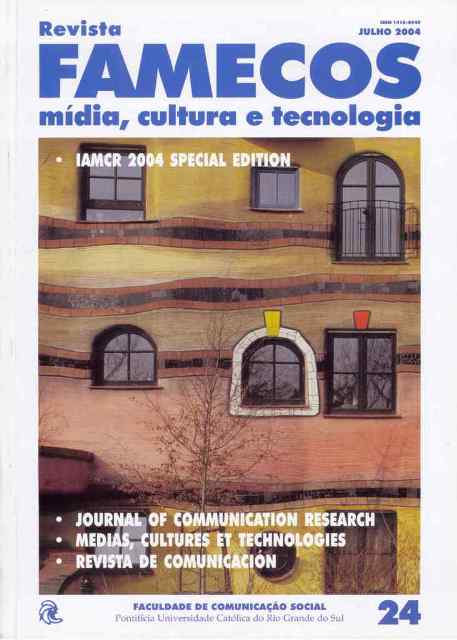Explorando a noção de presença em ambientes de aprendizagem remotos
DOI:
https://doi.org/10.15448/1980-3729.2004.24.3268Palavras-chave:
Ambientes de aprendizado, Dinâmica comunicacional, Mídia colaborativaResumo
Neste artigo discutimos questões relacionadas à comunicação e dinâmicas sociais que caracterizam a colaboração remota entre comunidades distantes. Essas observações surgem de pesquisas etnográficas realizadas em um workshop colaborativo envolvendo estudantes do MIT-Massachusetts Institute of Technology com outras universidades ou empresas privadas. O foco do artigo é a noção de presença. Esta noção é analisada através de três diferentes aspectos relacionados: a presença de informação, a presença de ferramentas de comunicação e, finalmente, a presença de pessoas. Estas análises dão indicações sobre como melhorar espaço de design para aprendizagem e colaboração remota usando ferramentas de comunicação multimídia interativas.Downloads
Referências
BASTIDE, Roger. Mémoire collective et sociologie du bricolagem. L’Année sociologique, n. 21, 1970.
DE CERTEAU, Michel. L’invention du quotidien. Paris: Éditions Gallimard, 1990.
DE KERCKHOVE, Derrick. Connected Intelligence: The Arrival of the Web Society. Canada: Somerville House Books, 1997.
HEIDEGGER, Martin. The question concerning technology and other essas. New York: Harper and Row, 1977.
JAKOBSON, Roman. Closing statement; Linguistics and Poetics. In: SEBEOK, Thomas A. Style in Language. MA: MIT Press, 1960. p. 350 - 377.
LÉVY, Pierre, The collective intelligence: Mankind’s emerging world in cyberspace. New York: Plenum Trade, 1997.
MAFFESOLI, Michel. Aux creux des apparences: Pour une éthique de l’esthétique. Paris: Plon, 1990.
MALINOWSKI, B. The problem of meaning in primitive languages. In: OGDEN, C. K.; RICHARDS, A. The Meaning of Meaning. USA: Harvest Book, USA, 1923, p. 296 - 336.
MEYROWITZ, Joshua. No sense of place. New York: Oxford University Press, 1985.
MITCHELL, William J. E-Topia. Cambridge: MIT Press, 1999.
______. Beyond productivity. Innovation technology, Innovation and creativity. Washington: The National Academic Press, 2003.
MORIN Edgar, Les sept saviors nécessaires à l éducation du futur. Paris: Ed. Du Seuil, 1999.
______. La méthode. La nature de la nature. Tome 1. Paris: Ed. Du Seuil, 1977.
RESNICK, Mitchell. Rethinking learning at the digital age. In: KIRKMAN, G. Global Information Technology Readiness Report 2001-2002. USA: University Press, 2002.
Downloads
Publicado
Como Citar
Edição
Seção
Licença
Direitos Autorais
A submissão de originais para a Revista Famecos implica na transferência, pelos autores, dos direitos de publicação. Os direitos autorais para os artigos publicados nesta revista são do autor, com direitos da revista sobre a primeira publicação. Os autores somente poderão utilizar os mesmos resultados em outras publicações indicando claramente a Revista Famecos como o meio da publicação original.
Licença Creative Commons
Exceto onde especificado diferentemente, aplicam-se à matéria publicada neste periódico os termos de uma licença Creative Commons Atribuição 4.0 Internacional, que permite o uso irrestrito, a distribuição e a reprodução em qualquer meio desde que a publicação original seja corretamente citada.






